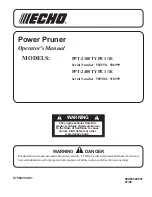
-28-
W1749 9" Bandsaw
O
PE
R
AT
IO
N
S
The bandsaw table will tilt 45˚ to the right to provide a
range of cutting options.
To tilt the table, do these steps:
1.
DISCONNECT BANDSAW FROM POWER!
2.
Loosen the table tilt lock knob and the table adjust-
ment tension knob shown in
Figure 42
.
3.
Tilt the table to the desired angle. Adjust the ten-
sion knob to move the table faster or slower. Use
the angle gauge for easy reference.
4.
Tighten the table tilt lock knob.
Table Tilt
Figure 42.
Table controls.
Table
Adj.
Knob
Table Adj.
Tension Knob
Angle
Gauge
Table Tilt
Lock Knob
Ripping is the process of cutting with the grain of the
wood stock. For plywood and other processed wood,
ripping simply means cutting down the length of the
workpiece. For ripping, a wider blade is better. In most
ripping applications, a standard raker tooth style will be
sufficient.
To make a rip cut, do these steps:
1.
Adjust the fence to match the width of the cut on
your workpiece and lock the fence in place.
2.
Adjust the upper blade guide assembly to the cor-
rect height.
3.
After all safety precautions have been met, turn the
bandsaw
ON
. Slowly feed the workpiece into the
blade and continue with the cut until the blade is
completely through the workpiece.
Figure 43
shows
a typical ripping operation.
Note:
If you are cutting narrow pieces, use a push
stick to protect your fingers.
Ripping
Figure 43.
Example of a typical ripping
operation with a push stick.
NEVER place fingers or hands in the
line of cut. In the event that something
unexpected happens, your hands or
fingers may be pulled into the blade.
ALWAYS use a push stick when ripping
narrow pieces. Failure to follow these
warnings may result in serious personal
injury!
















































